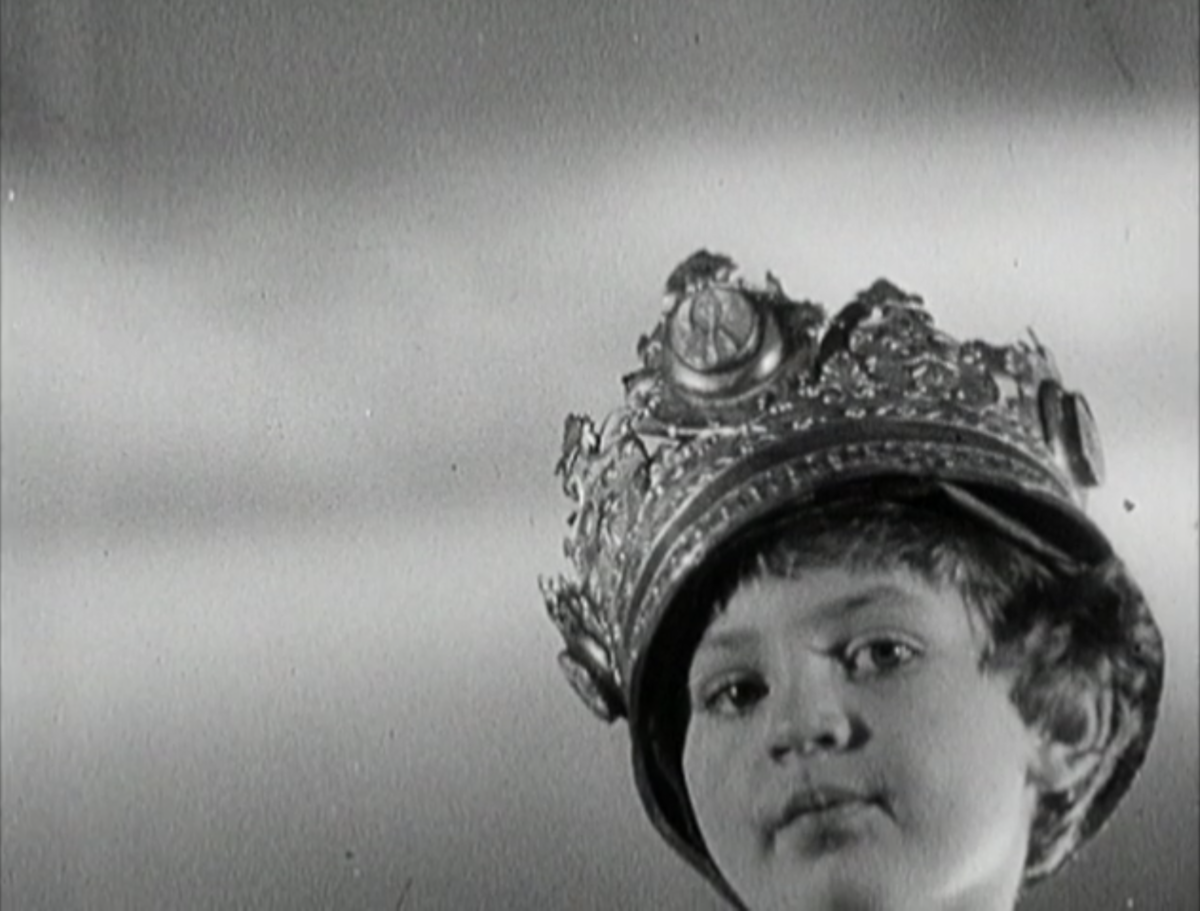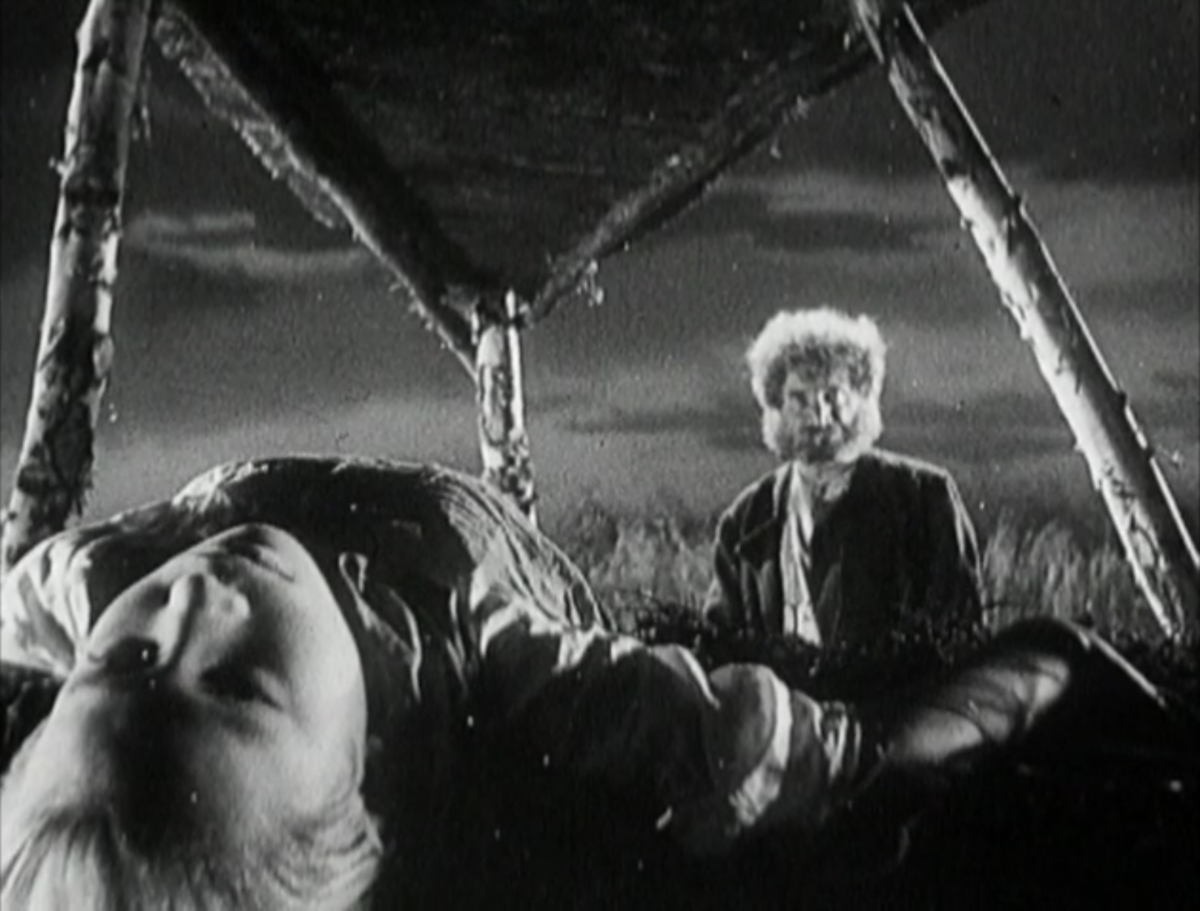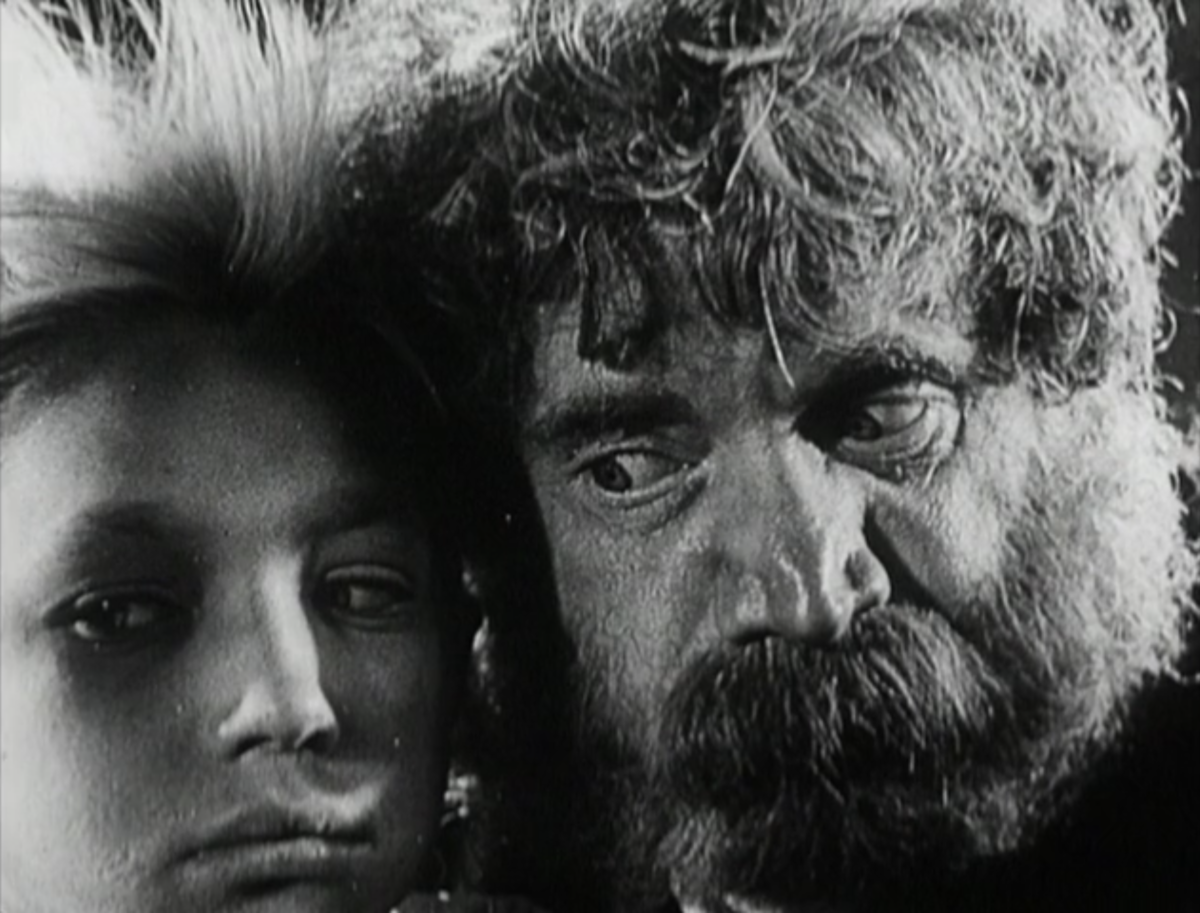Amos Vogel, the film programmer and critic, wrote in Film as a Subversive Art that “an illusion of movement is created by the rapid, stop-start series projection of still photographs, each one slightly different from the one before.” Just beneath Vogel’s description of the optical trick that transforms a succession of frames into a moving image, there exists a suggestion of the incremental decision-making process that each artist must undertake from shot to shot, or even frame to frame. The cumulative layers of image, embedded into the film strip like sediment, each contain divergent points of possibility, or a record of the artistic options that were open to the filmmaker. Just as soon as one frame suggests a range of possibilities, the next one forecloses them by imprinting a new, and altogether unexpected, image onto the mental screen. The formal device of the freeze-frame exposes this condition, arresting the progress of a film to isolate a fork in its path. If the frames along the film strip contain a record of the artist’s will, they also accumulate the scratches, burns, and smears that exceed their agency. A body of work passes through its historical context in much the same way: by working within and fighting against the limits imposed by circumstance.
Well before Chris Marker envisioned La Jetée as a procession of still photographs, Stalinist posterity reduced Sergei Eisenstein’s Bezhin Meadow (1937) to a collection of frozen pictures. By 1935, when production on the film maudit began, Eisenstein was no stranger to official censorship. Trotsky was removed from Eisenstein’s 1927 opus, October: Ten Days That Shook the World, and the complex formal structures of that work were widely derided as alien to the proletarian viewership. Eisenstein’s free-wheeling and bohemian sojourn across Europe and North America, from 1929 to 1932, didn’t yield any actual work: all his script treatments for the American studios were dismissed as the left-wing fancies of the “accursed red dog” and Upton Sinclair pulled the plug on Eisenstein’s adventures across Mexico when he lost faith in his working methods. An extended hiatus from filmmaking resulted in a ritualistic, and personally humiliating, disavowal of Eisenstein at a 1935 conference. The pressure to work, under less than ideal circumstances, only escalated. After a half-decade of failing to complete a film, Eisenstein embarked on his cursed production of Bezhin Meadow. When it became clear to the commissars that the film didn’t sufficiently excise Eisenstein’s usual formal predilections, production was halted and the reels were shelved. The film was destroyed in a wartime fire and a restoration was only possible on the basis of Eisenstein’s keepsakes: single still frame enlargements retrieved from every shot.
The poetic idyll of the opening frames in Bezhin Meadow recall the natural languor of Dovzhenko’s Earth, only an odd stylistic reference for Eisenstein if one omits another unceremoniously scuttled project from his filmography, Que viva Mexico!. Eisenstein, the mechanical engineer of cinematic effects, departed from some aspects of montage and flirted with a more organic and fluid conception of film style, as difficult to categorize as the protoplasmic mish-mash of organisms in the primordial soup (which for him was an image of constant fascination). Although with Eisenstein there were never any definitive departures—the old master was an incorrigible hoarder of artifacts and texts—so much as there were pivots, new rooms and corridors in the ever-deepening labyrinth of his thought. The innovative modernist of the 1920s and the esoteric theorist of the 1930s can’t be easily separated. Bezhin Meadow reflects not a singular Eisenstein but the multifaceted one: the filmmaker who threw all of his interests into the same overflowing pot.
Unlike Earth, however, Bezhin Meadow does not open with a paternal figure gently passing away amidst the pears and the sunflowers, nor does it spare any sentiment whatsoever for peasant wisdom. Though the countryside shines with the same ethereal, even symbolist, touch, they engulf a historical drama dead-set on overcoming the yoke of nature and the influence of the feudal past. The official mandate of the film is high-Stalinist, saddled with, though not altogether consumed by, the aim of promoting the collectivization and industrialization of agriculture at the twilight of Stalin’s second five-year plan. The extent to which Eisenstein’s uptake of these themes reflected his actual political commitment at the time remains unclear, but as Stalinism suffocated the post-revolutionary culture of artistic and intellectual ferment, so too did Eisenstein retreat from some of his more open humanism and idealistic fervor—though his committed formalism could never be eradicated.

The film stages a confrontation between Stepok, a golden poster boy of Soviet progress in the mold of a young pioneer, and his father, a brutal patriarch who has murdered his mother. The struggle between them bookends the whole story, casting the persistence of the past and the necessity of the future as a familial struggle. In between, the collective of farmers undertaking modernization are sabotaged by the kulaks, the class of prosperous planters who became the official enemy of Stalin’s project. After setting fire to the fuel depot, the gang of kulaks are chased across fields of wheat and rolling pastures by an army of farmers, the cowboys of Stalinist modernization. The chase proceeds from the depot, to a church, and ends along the highway where the kulaks are finally captured. The villagers return to the church, appropriating religious relics in joyous celebration. By night, the young boys guard the grain harvest. The film climaxes with the escape of Stepok’s father and the kulaks, who make a final attempt to destroy the harvest. Stepok dies protecting the farm from his father, although not before alerting the others and saving the grain.
Though the film left to us remains truncated and reduced, the impression of movement is still generated from frame to frame. The initial encounter between Stepok and his father creates a series of compositional oppositions, drawn out across multiple planes of space in the foreground and background of every shot. Between gazes, profiles, and grotesquely exaggerated features—emphasized through new wide-angle lensing techniques—the graphic qualities of the human face explode into dozens of unique combinations. The leering peasants, flanking Stepok’s father in a bar, begin to gawk at the presence of his son, standing in the doorway just after burying his mother. The screen direction of their surprised gazes creates formal conflicts across each cut. The suspicious looks cast about anticipate the cartoonish Boyars in Ivan the Terrible. The arrangement of the actors in the small room grasps at the baroque in its expressive complexity, creating a claustrophobic threat to the young Stepok, just before the leader of the kholkoz, or collective farm, rescues him.
The original conception of montage was based on the contradiction of formal elements at a micro- and macro-stylistic level: from the smallest possible building blocks of each composition to the structures of the film as a whole. Eisenstein’s theoretical and fairly idiosyncratic elaboration of montage as a formal method, at least in the silent era, intended to layer these juxtapositions to create a sustained effect of shock, terror, and awe in the viewer that would direct them toward the film’s ideological end. Bezhin Meadow bears the traces of this system, but can’t be wholly subsumed within it. Indeed, montage persists, especially in the more traditionally agitational sequences. When the kulaks set fire to a fuel depot, the chaos that erupts creates an array of juxtapositions that remain visible, even if drained of motion. The plumes of thick smoke and the throng of desperate masses alternate in direction across each cut, violating basic norms of visual continuity to visceral effect. The scale of the scene is dramatically emphasized, as the shots vary from extreme close-up to extreme long shot. One can only wonder how well it would have fared against similar sequences across Eisenstein’s oeuvre, from the massacre of the workers, intercut with the slaughter of a bull, in Strike to the widely cited and imitated descent of the Cossacks, along the Odessa steps, in Battleship Potemkin.
There even remain traces of Eisenstein’s humanism. The emotion of the crowd is individuated when Stepok hurls himself into peril just to save a few pigeons at the top of the fuel depot. The images of their flight from the burning rooftop lighten the impact of the catastrophe. At a later moment in the film, just after the minority of fleeing saboteurs find themselves cornered by the tractor-riding and rake-wielding farmers, Stepok intervenes to save the lives of these antagonists. At the moment of their capture, an axial cut draws the four of them ever closer to the picture plane to underscore their vulnerability to the righteous mob. Just as a vengeful farmer raises an axe against them, Stepok deflates the situation with a joke: “They belong in a museum…they think the Tsar has been brought back!” A cathartic relief washes over the crowd and they laugh, as the kulaks are treated with mercy and taken away, through the ocean of wheat. The moment recalls the triumph of non-violence at the end of Battleship Potemkin, when the mutineers pass through a naval blockade without firing a single shot.

At the time of Bezhin Meadow’s release, however, neither humanism nor montage were en vogue. The doctrine of socialist realism entailed an attack on the avant-garde that had flourished in the 1920s for the crime of formalism, deemed an excessive attention to the artistic texture of the work at the expense of a more straightforward and intelligible approach that could resonate with the everyday experiences of Soviet citizens. Eisenstein never openly repudiated the changes in Soviet literature and aesthetics, he merely attempted to adapt to them. Just as he had smuggled his own concerns with prehistory, anthropology, surrealism, martyrdom, and religious mysticism into other projects quite apart from their official propagandistic functions, so too did the richness and complexity of his inner life flood into the cracks of Bezhin Meadow’s basic attempt to follow the new doctrine. The mythical conflict between father and son, informed by the Freudian interpretation of Oedipal myth, was among the many reasons cited by Boris Shumyatsky, then in control of the film industry, when production was shut down and the public crucifixion began. Eisenstein probably intended to sincerely adopt a socialist-realist style, going so far as to work with an individual protagonist, but as production progressed he yet again transformed the project into a vehicle for his private enthusiasms.
Of all the many formal crimes conjured up by Eisenstein’s tenacity of spirit, the film’s occasional lapses into downright classical film language create the most surprises. In many compositions structured by the presence of a horizon, orthogonals lead the eye into a vanishing point. When the army of tractors chase down the kulaks, they appear as motifs receding into the distance (or as industrial widgets disappearing along an invisible conveyor belt). The most surprising formal gesture of all, though, returns Eisenstein to the question of religion. The procession of the idols in October, which demonstrated the roots of Christianity in some of the earliest prehistoric belief systems according to a reverse-chronological scale, depicted a series of religious statuettes from east to west. Intended as an anti-religious critique, the lighting and negative space created a vacuum of mystical adoration for these figures that undermined the commentary. The same contradiction emerges when the peasants in Bezhin Meadow, celebrating their defeat of the kulaks, dismantle the church and fetishize its many treasures. The sequence eschews mean-spirited iconoclasm, instead choosing to elevate ordinary peasants to the status of religious icons by adorning them with halos and crowns. The style of these scenes frustrates the image of Eisenstein as an ironclad materialist. In fact, the first biographer of the filmmaker claimed he struggled to repress his religious impulse and even once made a confession of faith.
Eisenstein translated the contradictions of his life into the juxtapositions of his work. Even when faced with the threat of disgrace, or worse, he followed his impulses to the end, suffering his way into artistic ecstasy. Perhaps it’s no wonder the figure of the martyr attracted him so, even if he borrowed it from religion for the purposes of revolution. After the ideals of the 1920s degenerated into a monstrosity, the field in which he worked severely narrowed. The traumatic break did not directly result from the dismissal of film plans or even the inability to overcome the external and internal blocks that repeatedly laid waste to this or that idea. In fact, even prior to the outbreak of repression, Eisenstein’s extensive notes and sketches for different projects outnumbered his actual achievements. The iterative process of envisioning new films yielded artistic energy that was directed to the actual filmmaking. The trauma resulted from the condemnation of his entire approach, the emergence of conditions and doctrines that upset his careful balance between theory and practice, turning him into an unwilling monk. In the 1920s, unfinished work served its purpose within the carefully constructed edifice of his working life. Only later on did it become a symbol of the straightjacket he found himself in. Bezhin Meadow lingers on in its frozen form as a fossil from this interregnum and a record of its own destruction.
From each point of failure the devotees now wring a drop of unrealized potential. Much like the process of disassembly and reconstitution that montage facilitates, admirers can endlessly reconstruct the true potential of Eisenstein’s career to overcome its tragic character, simply by plumbing the historical record. We dismember the corpse just to sow it back together. But just as the film strip has to pass through its projector one frame at a time, Eisenstein had to meet his historical moment one project at a time, negotiating the limits set by a vast swirl of social forces beyond his control. The very idea of an artist unencumbered by the limits of history necessarily can’t exist. The only way out is through.
